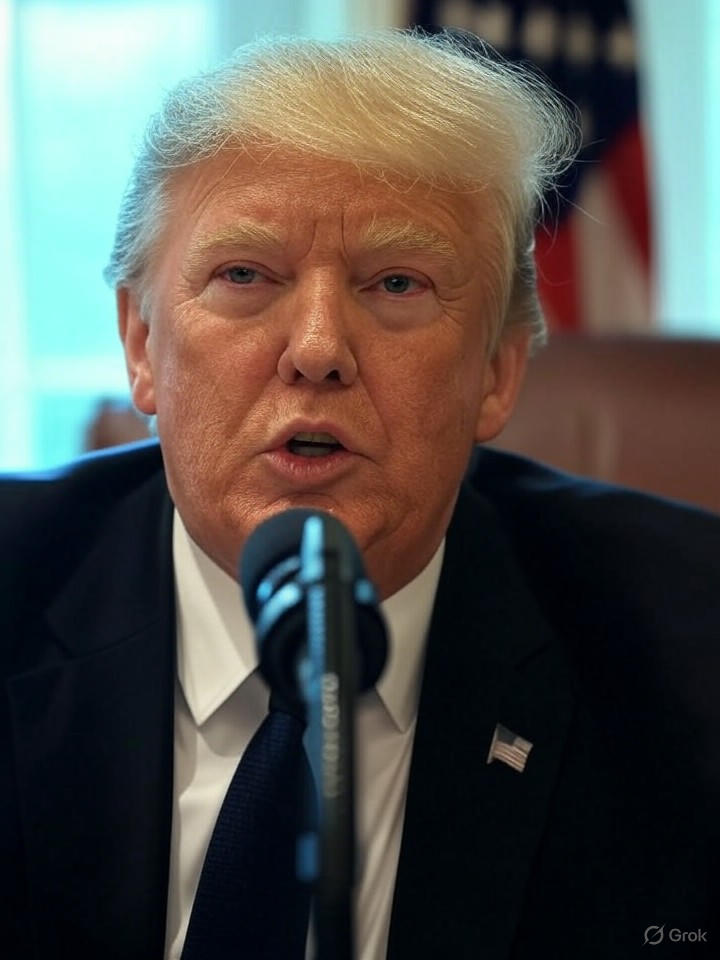
The ongoing trade discussions between the United States and Taiwan have taken a significant turn, as the Trump administration has made a bold demand of Taiwan Semiconductor Manufacturing Co. (TSMC). Reportedly, the U.S. is seeking to condition a reduced 15% tariff on Taiwanese goods on TSMC’s agreement to acquire a 49% stake in Intel Corp. and invest a staggering $400 billion in the United States. This proposal has the potential to reshape the global semiconductor landscape.
This development, first reported in Taiwanese media and widely discussed on social platforms, reflects Trump’s “America First” strategy, which intertwines trade policy with national security concerns. According to a Reuters article dated August 4, 2025, trade officials in Taiwan are maintaining confidentiality as negotiations proceed. Any potential agreement will be subject to parliamentary review, underscoring the sensitivity of these discussions.
The backdrop to these demands includes Trump’s earlier imposition of a 32% “reciprocal tariff” on Taiwanese goods in April 2025. While semiconductors were initially excluded from this tariff, the situation has led to speculation regarding broader implications for technology supply chains.
Implications of Tariff Conditions
The conditions set forth by the U.S. have sparked considerable discussion across various platforms, particularly on X (formerly Twitter). Users, including financial analysts, have expressed concern about the low likelihood of TSMC agreeing to such terms, yet recognize the potential for significant impacts on U.S. chip production if it does. The 15% tariff has been framed by senior U.S. officials as a concession contingent upon TSMC’s deeper integration with Intel.
This situation is compounded by Trump’s criticisms of Taiwan’s leading role in the semiconductor market. A recent Wikipedia entry, updated on August 5, 2025, details Trump’s announcement of tariffs on South Korean goods and subsequent measures involving Taiwan, highlighting the broader trade tensions in the region.
The economic consequences of these tariffs could be profound, particularly for the technology sector. A Tax Foundation analysis published on August 4, 2025 estimates that Trump’s tariffs could result in an average tax increase of $1,300 per U.S. household this year, with the potential to escalate prices across global tech markets. Should TSMC proceed with the investment, it may accelerate the transfer of advanced chip manufacturing to the U.S., although this could strain Taiwan’s economy, where over 70% of information and communications technology exports are directed towards the U.S., according to Focus Taiwan.
Geopolitical and Industry Reactions
Industry insiders view these developments as strategic maneuvers intended to counter China’s burgeoning influence in the semiconductor sector. An article from the Foreign Policy Research Institute, published on July 11, 2025, indicates growing concerns among East Asian nations regarding U.S. reliability in trade agreements. In response, Taiwan’s government has approached the situation cautiously, offering to increase U.S. imports and eliminate tariffs on American goods. Nevertheless, the opposition party, the Kuomintang, has criticized this approach, arguing it undermines President Lai Ching-te’s strategy of strengthening ties with the U.S. against China.
Discussions on platforms like Reddit have revealed widespread apprehension among technology professionals regarding the potential disruption of supply chains. Users speculate on the possible stock market impacts for both TSMC and Intel, echoing insights from a BBC piece dated July 31, 2025, which discussed how Trump’s unpredictable trade policies have contributed to rising prices in the U.S.
As negotiations continue, the tech industry braces for volatility. A report from the Straits Times on August 5, 2025 highlights increasing skepticism in Taiwan about being utilized as a pawn in U.S.-China negotiations. Should the investment in Intel materialize, it could significantly bolster U.S. semiconductor production capabilities, further supported by TSMC’s existing $65 billion investment in fabrication facilities in Arizona.
Critics warn that this approach could alienate a crucial ally. A column in the Chicago Tribune, also published on August 5, 2025, outlines Taiwan’s internal challenges, including pressures related to defense spending amid tariff threats. For industry leaders, the decision looms large: comply with U.S. demands and risk diminishing Taiwan’s competitive edge, or resist and face increased tariffs, all while navigating the unpredictability of Trump’s trade policies that could redefine global technology alliances.
As this complex situation unfolds, the ramifications for both U.S. and Taiwanese economies remain uncertain, with potential implications that could ripple through global supply chains and market dynamics.






